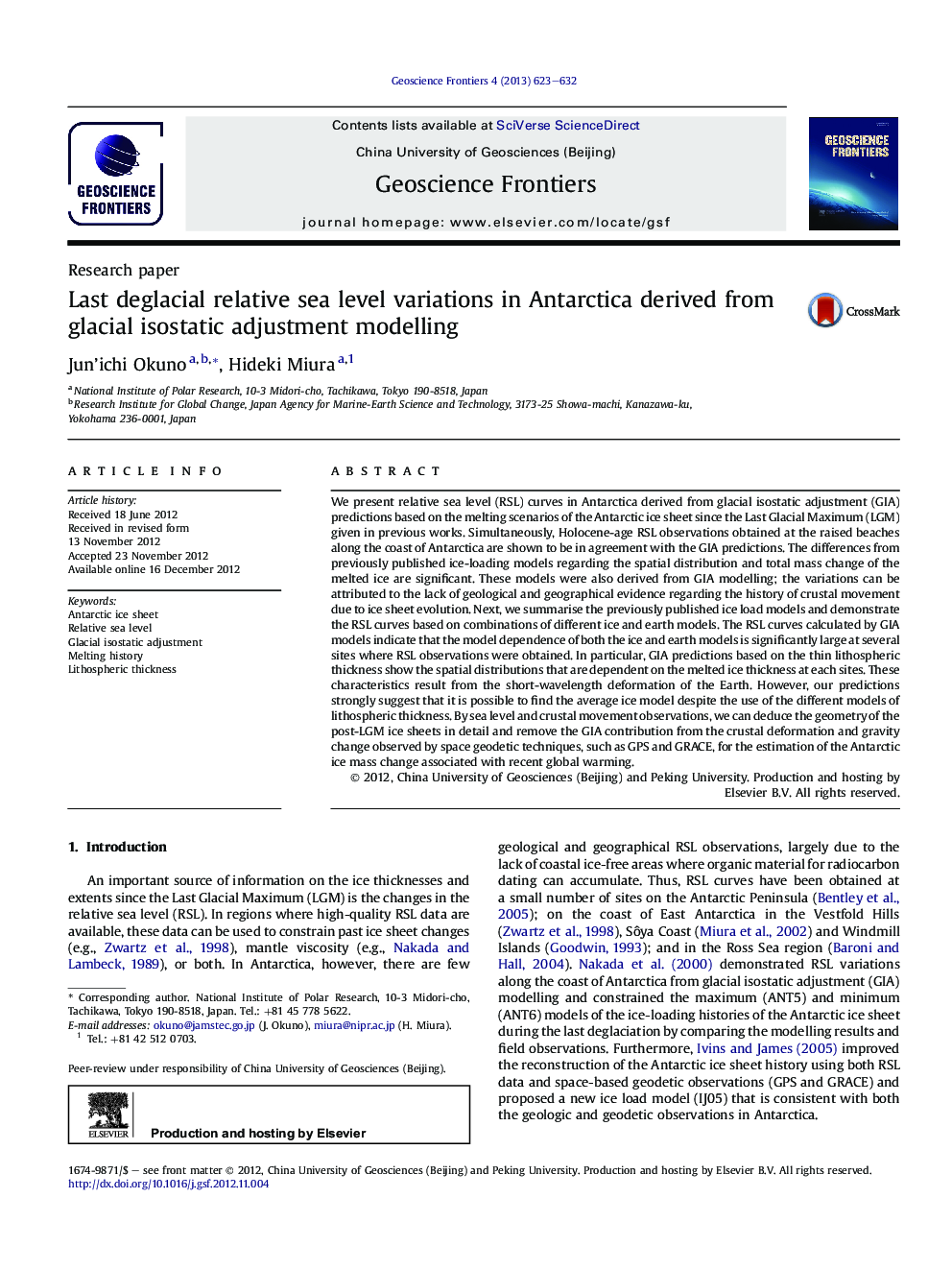| Article ID | Journal | Published Year | Pages | File Type |
|---|---|---|---|---|
| 4681645 | Geoscience Frontiers | 2013 | 10 Pages |
We present relative sea level (RSL) curves in Antarctica derived from glacial isostatic adjustment (GIA) predictions based on the melting scenarios of the Antarctic ice sheet since the Last Glacial Maximum (LGM) given in previous works. Simultaneously, Holocene-age RSL observations obtained at the raised beaches along the coast of Antarctica are shown to be in agreement with the GIA predictions. The differences from previously published ice-loading models regarding the spatial distribution and total mass change of the melted ice are significant. These models were also derived from GIA modelling; the variations can be attributed to the lack of geological and geographical evidence regarding the history of crustal movement due to ice sheet evolution. Next, we summarise the previously published ice load models and demonstrate the RSL curves based on combinations of different ice and earth models. The RSL curves calculated by GIA models indicate that the model dependence of both the ice and earth models is significantly large at several sites where RSL observations were obtained. In particular, GIA predictions based on the thin lithospheric thickness show the spatial distributions that are dependent on the melted ice thickness at each sites. These characteristics result from the short-wavelength deformation of the Earth. However, our predictions strongly suggest that it is possible to find the average ice model despite the use of the different models of lithospheric thickness. By sea level and crustal movement observations, we can deduce the geometry of the post-LGM ice sheets in detail and remove the GIA contribution from the crustal deformation and gravity change observed by space geodetic techniques, such as GPS and GRACE, for the estimation of the Antarctic ice mass change associated with recent global warming.
Graphical abstractFigure optionsDownload full-size imageDownload as PowerPoint slideHighlights► Relative sea level curves based on the glacial isostatic adjustment modelling. ► Evaluation of dependence on ice melting models suggested by previous works. ► Relative sea levels at 7 cal. kyr BP strongly dependent on the adopted models.
